
Beata is a genus of jumping spiders that was first described by George Peckham & Elizabeth Peckham in 1895.

Breda is a genus of jumping spiders that was first described by George Peckham & Elizabeth Peckham in 1894.

Chira is a genus of jumping spiders that was first described by George Peckham & Elizabeth Peckham in 1896. It is currently named after Rio Chira, a river in Peru, but the Peckhams originally called the genus Shira, later emended by Eugène Simon.
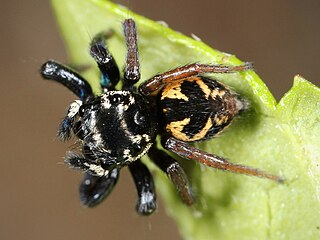
Corythalia is a genus of jumping spiders that was first described by Carl Ludwig Koch in 1850. The genus is distributed throughout most of the Western Hemisphere. Species of this genus are found in The Americas.
Eustiromastix is a genus of jumping spiders that was first described by Eugène Louis Simon in 1902.
Fluda is a genus of jumping spiders that was first described by George and Elizabeth Peckham in 1892.

Freya is a genus of jumping spiders that was first described by Carl Ludwig Koch in 1850. The name is derived from Freya, the fertility goddess of Norse mythology.
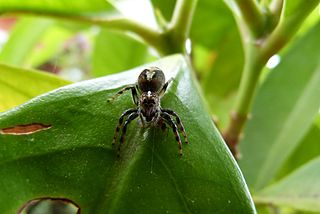
Frigga is a genus of jumping spiders that was first described by Carl Ludwig Koch in 1850. The name is derived from Frigga, a Norse goddess.
Helvetia is a Neotropical genus of the spider family Salticidae. The genus name is derived from Helvetia.

Lyssomanes is a spider genus of the family Salticidae, ranging from South and Central America, up to the southern United States.
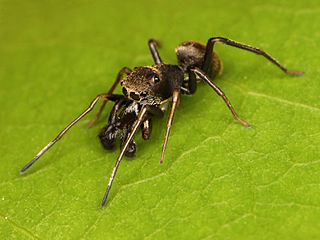
Martella is a genus of ant mimicking jumping spiders that was first described by George and Elizabeth Peckham in 1892. Species of this genus are found in South America and Central America.

Noegus is a genus of jumping spiders that was first described by Eugène Louis Simon in 1900.
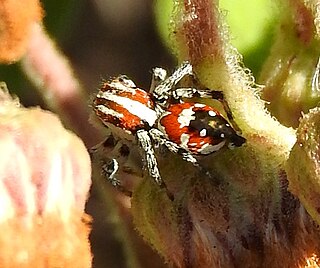
Nycerella is a genus of spiders of the jumping spider family, Salticidae.

Pachomius is a genus of jumping spiders that was first described by George and Elizabeth Peckham in 1896. Uspachia was merged into genus Romitia in 2007, and all nine species were merged into Pachomius in 2015. The name is derived from Pachomius, the founder of cenobitic monasticism.
Pensacola is a genus of jumping spiders that was first described by George and Elizabeth Peckham in 1885.
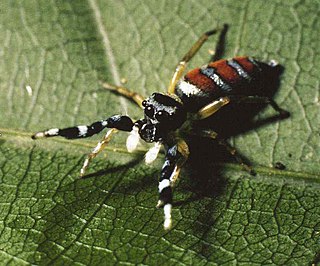
Psecas is a genus of jumping spiders that was first described by Carl Ludwig Koch in 1850.

Sarinda is a genus of ant mimicking jumping spiders that was first described by George and Elizabeth Peckham in 1892.

Synemosyna is a genus of ant mimicking jumping spiders that was first described by Nicholas Marcellus Hentz in 1846.

Zygoballus is a genus of jumping spiders found in North and South America.

The Dendryphantina are a subtribe of jumping spiders that occur mainly in the New World. The subtribe was first defined by Anton Menge in 1879 as Dendryphantidae. Females of the subtribe generally show paired spots on the abdomen, and the males often have enlarged chelicerae. Females in this subtribe typically have S-shaped epigynal openings.
















